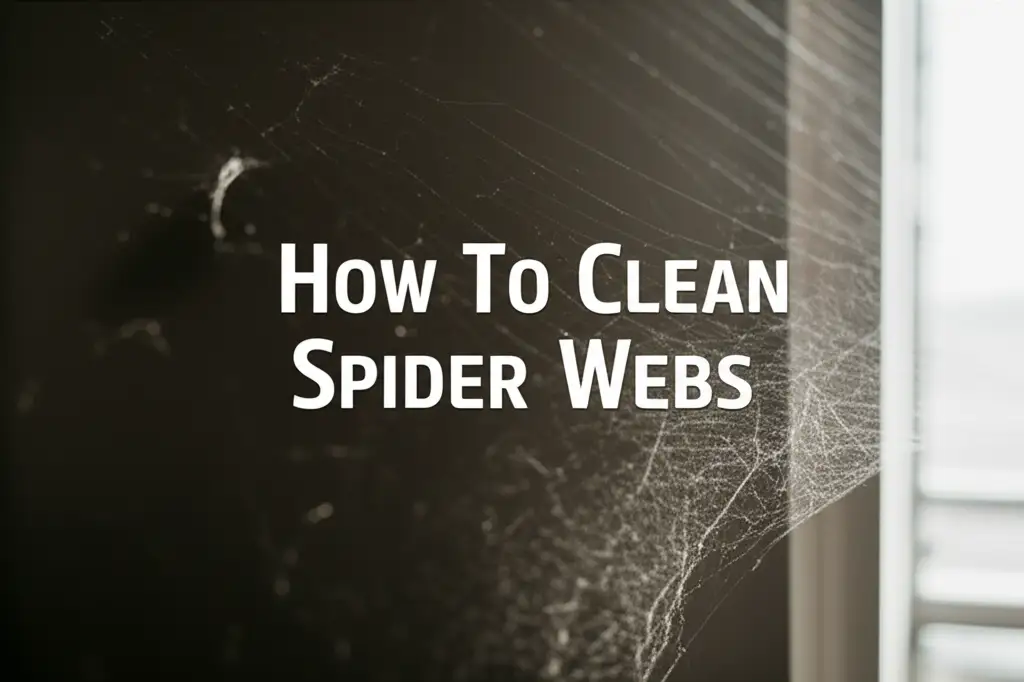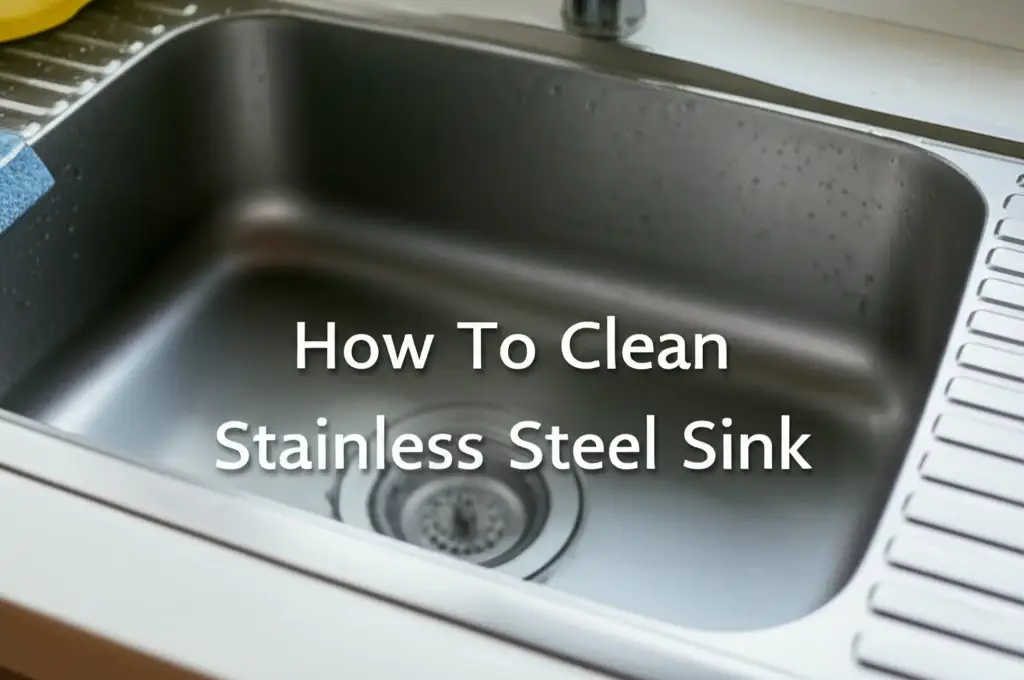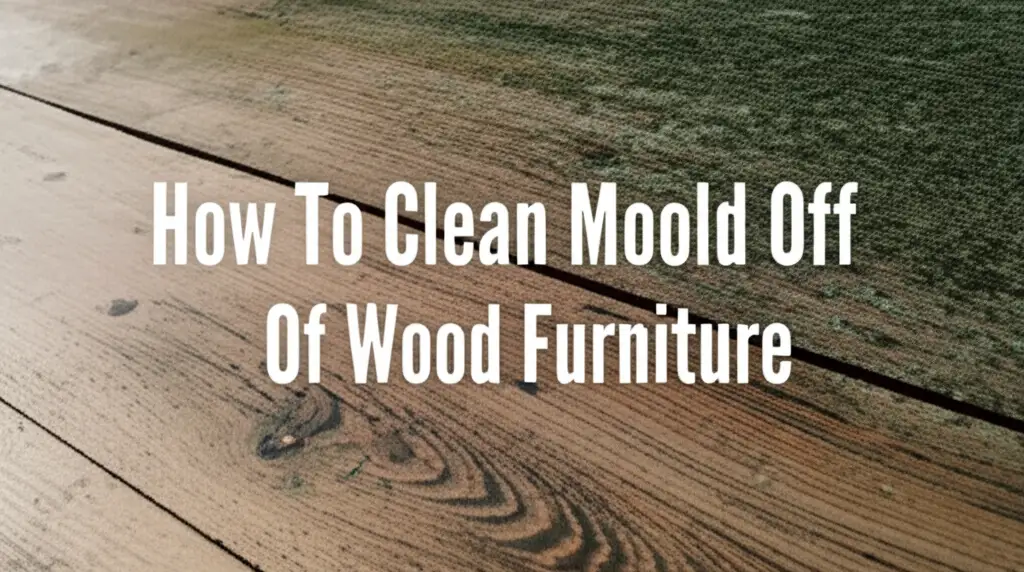· Home Cleaning · 16 min read
How To Clean Spider Webs

Easily Clean Spider Webs for a Pristine Home
Spider webs often appear as an unwelcome sight in our homes. They gather dust and make our spaces look untidy. Learning how to clean spider webs effectively helps maintain a clean and fresh environment. This guide will provide practical steps and useful tips for removing these webs. You will learn about the right tools and methods for both indoor and outdoor areas. We also discuss ways to keep webs from coming back.
Cleaning spider webs is simpler than you think with the right approach. We cover everything from choosing the best dusters to implementing long-term prevention strategies. This article helps you tackle web removal with confidence. Get ready to transform your living spaces, making them spotless and inviting. A clean home is a happy home, free from unwanted cobwebs.
Takeaway
- Gather the Right Tools: Use extendable duster, vacuum, or broom with cloth.
- Work Top-Down: Always start cleaning from the ceiling down to the floor.
- Address All Areas: Clean both visible webs and hidden spots.
- Prevent Future Webs: Seal cracks, keep areas clean, and use natural repellents.
- Maintain Regularly: Consistent cleaning prevents large web buildups.
To clean spider webs, first gather proper tools like an extendable duster or vacuum cleaner. Start at the highest point of the web and move downwards, carefully collecting the web and any dust. For stubborn webs, a damp cloth or a vinegar solution can help remove sticky residues from surfaces.
Understanding Spider Webs: More Than Just Dust
Spider webs are common in many homes, often appearing in corners or high places. People see them as just dust collectors, but webs are complex structures built by spiders. Spiders use webs to catch food, to move around, or as homes. Recognizing this helps us understand why they appear and how best to remove them. Each web serves a purpose for the spider that made it.
Different types of spiders make different webs. Some spiders build messy, tangled webs, often called cobwebs. Other spiders create neat, intricate orb webs. Knowing the web type does not change how you clean it, but it shows the variety of spider activity. Webs are sticky, designed to trap insects. This stickiness makes them hold onto dust and dirt easily. Over time, a clean web becomes a dusty, noticeable mess.
These webs can sometimes signal an increase in insects inside your home. Spiders build webs where they find food sources. If you see many webs, you might have more tiny bugs than you realize. Cleaning the webs removes the immediate problem. It also helps you assess if you have a larger insect issue. Removing webs improves your home’s appearance. It also reduces potential food sources for spiders, encouraging them to leave.
Regular removal of webs is a key part of good home hygiene. They can accumulate allergens like dust mites and pollen. People with allergies may find their symptoms worsen with many webs present. Clearing these webs helps to improve indoor air quality. It creates a healthier environment for everyone living in the house.
Consider the areas where webs form most often. These are usually undisturbed spots. High ceilings, corners, behind furniture, and inside cabinets are common places. Identifying these areas makes your cleaning routine more efficient. You can target your efforts where they are most needed. Understanding what webs are and where they appear helps you clean smarter.
Essential Tools for Effective Spider Web Removal
Having the right tools makes cleaning spider webs much easier and more effective. You do not need many special items, but a few key tools work best. A good extendable duster is a must-have for reaching high ceilings and corners. These dusters often have soft, fluffy heads that grab webs without spreading dust around. Some even bend to fit into odd angles.
A vacuum cleaner with a brush attachment is another powerful tool. For large, loose webs, a vacuum sucks up the web and any captured debris directly. This prevents webs from falling onto your floors or furniture. You can use the hose attachment for tight spots or crevices. Make sure to empty the vacuum bag or canister often, especially after collecting many webs. This keeps your vacuum working well.
For webs on smooth surfaces like walls or windows, a damp cloth or sponge works well. Lightly dampen the cloth; too much water can smear dusty webs. A microfiber cloth is excellent because it traps dust and web particles. For stubborn sticky residues, a small amount of mild soap or a vinegar solution on the cloth can help. Always test cleaners on an inconspicuous area first. When you clean your walls with vinegar, you can often remove light marks and help repel spiders.
A broom wrapped with a clean cloth can also serve as a makeshift web remover. Secure the cloth with a rubber band to the broom head. This allows you to sweep down webs from higher areas if you do not have an extendable duster. Remember to use a clean cloth for each area to avoid spreading dirt. This method is simple and uses common household items.
For outdoor webs or very high indoor areas, a leaf blower on a low setting might be useful. Direct the air stream at webs to blow them away. Use caution with this tool, especially indoors, as it can create a lot of dust. This method is best for larger, more open spaces like garages or porches. Always wear eye protection when using a leaf blower.
Cleaning Spider Webs Indoors: A Room-by-Room Guide
Cleaning spider webs inside your home requires a systematic approach. Start at the top and work your way down in each room. This ensures that any falling debris lands on surfaces you have not yet cleaned. I always begin with the ceilings and upper corners. Use an extendable duster to reach these high spots. Gently sweep the duster across the web, allowing it to cling to the fibers.
Move from the corners along the edges of the ceiling. Pay special attention to light fixtures and ceiling fans. Webs love to collect around these warm spots. For ceiling fans, wipe the blades with a damp cloth after dusting off webs. When cleaning the ceiling, ensure you get into every corner and crevice to remove all hidden webs.
Next, focus on walls. Sweep the duster or vacuum attachment down the walls, moving slowly to capture all web strands. Check behind pictures, wall hangings, and curtains. Spiders often hide and build webs in these less disturbed areas. For sticky residues on painted walls, a barely damp microfiber cloth can gently wipe them away without damaging the paint.
Furniture also needs attention. Dust the top of tall bookshelves, cabinets, and appliances. Spiders can create webs underneath chairs, tables, and even inside drawers if left undisturbed. Use a vacuum with a narrow attachment to get into tight spaces. Don’t forget to look under the refrigerator or behind the oven for hidden webs. Sometimes, even the bottom of a pan can host a tiny web if it sits unused.
Finally, clean baseboards and floor corners. Use your vacuum or a damp cloth to remove any webs that have fallen or accumulated here. Pay attention to vents and window sills. After removing all webs, vacuum or sweep the floors to pick up any remaining dust or debris. This detailed room-by-room method ensures no web is missed, leaving your home spotless.
Tackling Outdoor Spider Webs: Facades, Eaves, and Gardens
Outdoor spider webs are a common sight, especially on the exterior of your home. These webs can quickly make your house look neglected. Cleaning them requires different tools and methods than indoor cleaning. Start with the main facade of your house. Use a long-handled brush or a broom to reach webs on walls, siding, and brickwork. Sweep down in long strokes, dislodging webs and egg sacs.
Pay special attention to eaves, porch ceilings, and light fixtures. These areas offer excellent shelter for spiders and are prime web-building spots. An extendable duster designed for outdoor use is very helpful here. Some outdoor dusters come with stiff bristles that can handle tougher webs and debris. A garden hose with a strong nozzle setting can also rinse away many webs from these areas. For persistent webs, a mixture of water and a few drops of dish soap in a spray bottle can help loosen them before rinsing.
Windows and door frames are also common spots for outdoor webs. Use a wet sponge or cloth to wipe these areas down. For windows, consider using a window cleaner after web removal for a streak-free finish. Don’t forget the screens; spiders love to build webs on screens. You can gently brush webs off screens or use a vacuum with a brush attachment on a low setting.
In your garden, check sheds, fences, and outdoor furniture. Spiders are abundant in garden spaces because insects are plentiful. Regularly brush down garden furniture and shed exteriors. For very large or intricate webs on plants, consider if removal is necessary. Some garden spiders are beneficial, eating pests. If the web is not bothering anyone, you might leave it. If you need to clean mold off items in your garden, like a concrete path, know that similar methods apply to general outdoor cleaning. For example, learning how to clean mold off concrete uses brushing and rinsing, similar to web removal.
A leaf blower can be very effective for quickly clearing large areas like deck railings or patio furniture. Use it on a low setting to avoid scattering too much debris. Always wear safety glasses when using power tools. Regular outdoor cleaning reduces spider populations around your home. This makes your exterior look clean and helps keep spiders from moving indoors.
Eco-Friendly Solutions for Web Cleaning and Prevention
Many people prefer to use cleaning methods that are safe for their families and the environment. Fortunately, several eco-friendly solutions exist for cleaning spider webs and discouraging spiders. Vinegar is a wonderful natural cleaner. You can mix equal parts white vinegar and water in a spray bottle. Spray this solution directly onto webs. The acidity helps dissolve the sticky silk, making webs easier to wipe away. This method is safe for most surfaces, but always test it in an hidden spot first. Learn how to clean glass with vinegar for a deeper understanding of its cleaning power.
Another natural repellent is peppermint oil. Spiders dislike the strong scent of peppermint. Mix about 10-15 drops of peppermint essential oil with water in a spray bottle. Spray this mixture in corners, along baseboards, and in areas where you frequently find webs. You can also place cotton balls soaked in peppermint oil in problem areas. Replace the cotton balls every few weeks to keep the scent strong. This is a pleasant smell for humans but a deterrent for spiders.
Diatomaceous Earth (DE) is a natural powder made from fossilized algae. It is non-toxic to humans and pets but harmful to insects and spiders. DE works by absorbing the oils and fats from insects’ exoskeletons, causing them to dehydrate. You can lightly sprinkle food-grade DE in cracks, crevices, and around window sills. This creates a barrier that spiders will avoid. Always use food-grade DE indoors, as industrial DE is different.
Maintaining a clean and clutter-free home also acts as an eco-friendly prevention method. Spiders seek out undisturbed, cluttered areas for shelter and web-building. Regularly dusting, vacuuming, and decluttering reduces potential hiding spots. A clean home is less appealing to spiders. This is a simple, effective, and completely natural way to manage pests. Think about how a clean shower helps prevent mold. Similarly, a tidy home prevents spiders. Knowing how to clean mold with vinegar shows its versatility in cleaning.
Finally, proper sealing of entry points is key. Check your windows and doors for gaps or cracks. Use caulk or weatherstripping to seal these openings. This prevents spiders and other insects from entering your home. These small steps, combined with natural cleaning solutions, offer an effective and eco-conscious way to manage spider webs.
Preventing Future Spider Web Accumulation
Preventing spider webs from reappearing is just as important as cleaning them. A proactive approach saves you time and effort in the long run. The first step is to seal all entry points into your home. Spiders can squeeze through tiny cracks around windows, doors, and foundations. Use caulk to seal these gaps. Install weatherstripping around doors and windows to create a tight seal. Check screens on windows and doors for tears and repair them promptly.
Reducing clutter, both inside and outside, is another key prevention strategy. Spiders love to hide in undisturbed, dark, and cluttered areas. Inside, regularly tidy up storage areas, basements, and attics. Organize boxes and store items in sealed plastic containers. This takes away prime hiding spots for spiders. Outside, remove piles of leaves, firewood, and debris from around your home’s foundation. Keep bushes and trees trimmed away from the house walls.
Good outdoor lighting choices can also deter spiders. Many insects are attracted to bright outdoor lights. Spiders build webs near these lights to catch their prey. Use yellow LED “bug lights” instead of traditional white lights. Yellow lights are less attractive to insects, which in turn means fewer spiders. Direct outdoor lighting away from your house, if possible.
Regular cleaning remains a powerful preventive measure. Even after thorough web removal, check common spider spots once a week. A quick sweep with an extendable duster can catch new webs before they become large. Consistent dusting and vacuuming keep dust and potential food sources for spiders at bay. This type of routine cleaning is simple. It stops spiders from making your home their own. Even cleaning under a refrigerator regularly can help eliminate hidden spider habitats. Learning how to clean under a refrigerator helps with those out-of-sight areas.
Natural repellents can provide an extra layer of protection. As mentioned before, peppermint oil or citrus sprays can deter spiders. Spray these solutions in corners, around windows, and along baseboards periodically. Cinnamon sticks or cedar blocks also give off scents spiders dislike. Place these in closets or drawers. Combining these prevention methods creates a less hospitable environment for spiders.
Safety Tips When Cleaning Spider Webs
Cleaning spider webs often involves reaching high places and dealing with dusty debris. It is important to prioritize your safety during this task. Always use a stable stepladder or a sturdy chair when reaching high ceilings or corners. Never stand on unstable furniture. Ensure the ladder is fully open and locked before climbing. Have someone spot you if you are using a tall ladder.
Wear appropriate protective gear. A face mask or bandana helps prevent you from inhaling dust and airborne web particles. These particles can irritate your respiratory system, especially if you have allergies or asthma. Safety glasses or goggles protect your eyes from falling dust and debris. Long sleeves and gloves can prevent skin irritation, particularly if you are sensitive to dust.
Be mindful of what might be in the webs. While most spiders are harmless, some can deliver a painful bite. Do not directly touch webs with your bare hands. Use your duster, vacuum, or a broom to remove them. If you suspect venomous spiders, like black widows or brown recluse spiders, are in your home, exercise extreme caution. These spiders prefer dark, secluded areas. If you encounter many such spiders, consider calling a professional pest control service.
Be careful around electrical fixtures. Before dusting around light fixtures or ceiling fans, ensure the power is off at the switch. This prevents accidental shocks. Never use wet tools or cleaning solutions near exposed wiring. When cleaning outdoor webs, especially near power lines or electrical boxes, maintain a safe distance.
After cleaning, wash your hands thoroughly. If you used a vacuum, empty the canister or bag outdoors into a sealed trash bag. This prevents spiders or insects from escaping back into your home. Clean your dusters and brushes after each use. Shake them outdoors or wash them to remove trapped webs and dust. A clean duster works better and avoids spreading debris. Following these safety tips makes your web cleaning routine safer and more effective.
FAQ Section
Why do spiders make so many webs?
Spiders make webs for many reasons. They use them to catch food, typically insects. Webs also serve as homes, places to lay eggs, or a means to travel by ballooning. If they find plenty of insects, they will build more webs. This is a natural part of their life cycle.
How often should I clean spider webs?
The frequency depends on your home and location. In general, aim to clean spider webs every few weeks as part of your regular dusting routine. In areas with high spider activity or during specific seasons, you might need to clean weekly. Consistency prevents large buildups.
Can spider webs cause allergies?
Yes, spider webs can contribute to indoor allergens. Webs themselves are not usually direct allergens. However, they collect dust, pollen, pet dander, and other airborne particles. These collected allergens can trigger symptoms in sensitive individuals. Removing webs helps improve indoor air quality.
What if I have a lot of spiders?
If you notice a significant increase in spiders, it might indicate a larger insect problem. Spiders are drawn to areas with ample food sources. Beyond cleaning webs, focus on reducing their food supply by managing other pests. If the problem persists, consider professional pest control services.
Are there natural spider repellents?
Yes, several natural repellents exist. Spiders dislike the scent of peppermint oil, citrus, and cedar. You can spray diluted essential oils, place cotton balls soaked in oil, or use cedar blocks in problem areas. These methods offer a safer alternative to chemical sprays.
Do spider webs carry germs?
Spider webs are generally not considered major carriers of harmful germs. They accumulate dust, dirt, and dead insects. While not a primary source of illness-causing pathogens, it’s best to remove them for cleanliness and to reduce dust-related allergens. They are more of a nuisance than a health hazard.
Conclusion
Cleaning spider webs is a simple yet impactful way to maintain a clean and pleasant home environment. We have covered everything from understanding why webs form to effective removal techniques. You now have the knowledge to tackle webs indoors and out, using the right tools and eco-friendly solutions. Remember to work from top to bottom, focusing on corners and hidden spots. By regularly addressing these dusty networks, you improve air quality and reduce potential allergens.
Beyond just how to clean spider webs, we also discussed crucial prevention strategies. Sealing entry points, decluttering, and using natural repellents can significantly reduce spider activity. A clean home is less appealing to spiders, ensuring fewer webs appear over time. Implement these tips into your routine, and you will enjoy a consistently tidy, web-free space. Take action today to make your home shine.
- spider webs
- cleaning tips
- home maintenance
- cobweb removal
- pest prevention




